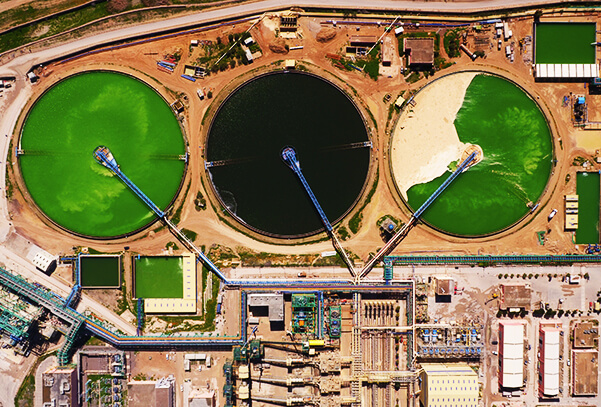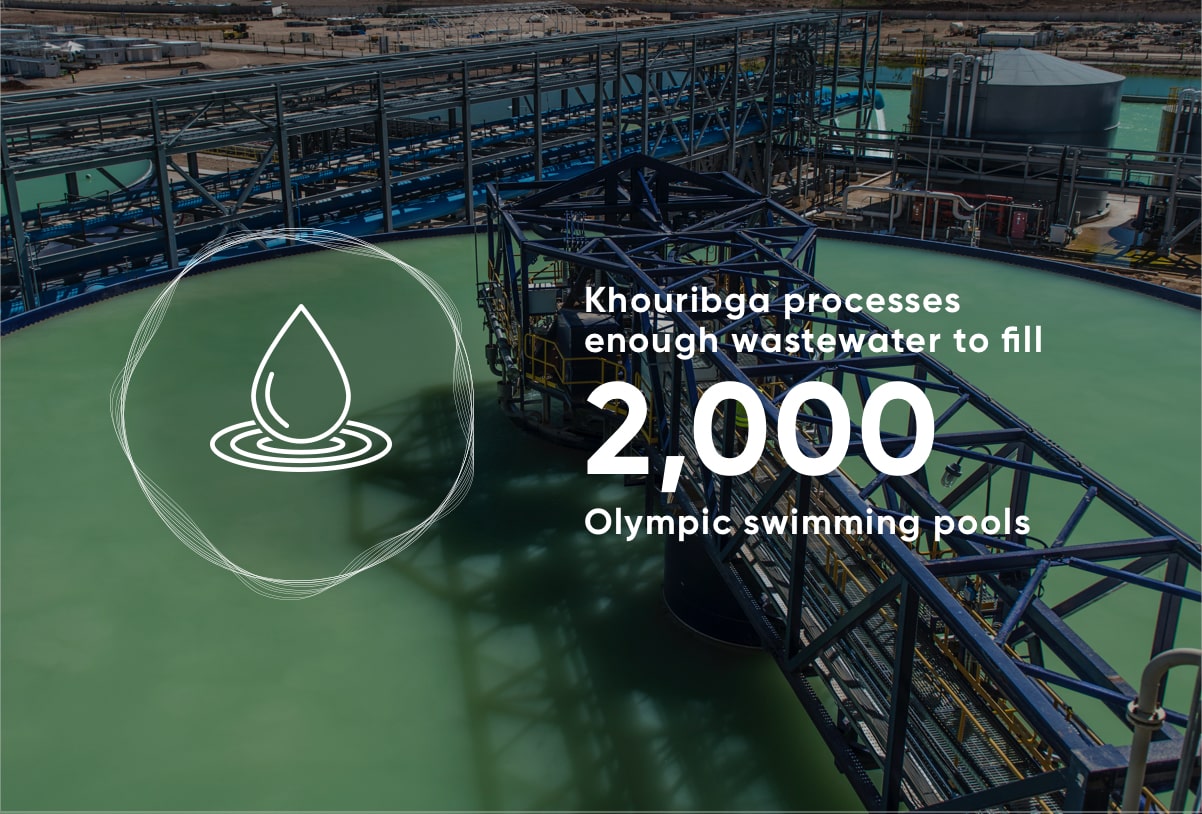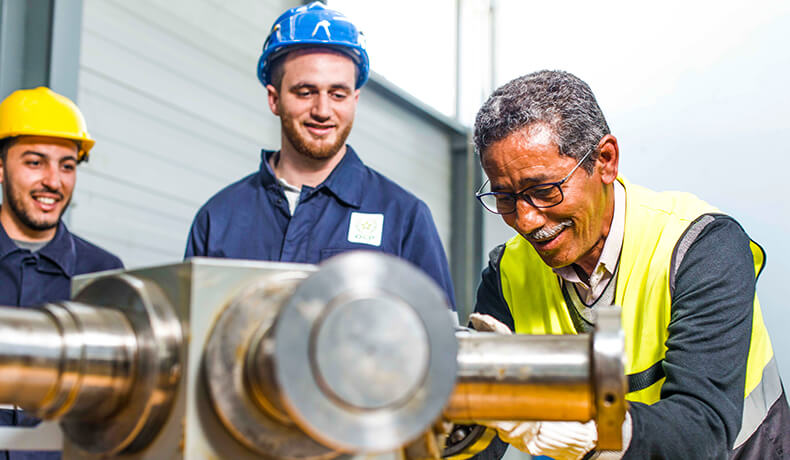Our water program is changing where we get our water from, and how much we use.
We face a challenge: we need to increase production to meet growing global demand, and at the same time reduce and diversify our water use. Our water program is designed to help us do both.
As part of our water program we’re using innovative techniques and unconventional water sources to reduce our need for fresh water to zero by 2030. The program is designed to optimize our water use, transform our processes, and invest in the R&D that will find even better ways to reduce our water use.
Our progress so far
25 Mm3
of seawater desalinated for industrial use annually
3 Mm3
of water saved with the slurry pipeline
80%
of water used in phosphate enrichment is recycled

Optimizing water use through the value chain
We’ve developed many ways to use less water throughout our value chain. For example, we reuse 80% of the wastewater from phosphate enrichment, and our slurry pipeline saves nearly three million cubic metres of water a year in transporting phosphate from Khouribga to Jorf Lasfar.

Reclaiming urban wastewater
We use urban wastewater to wash phosphate as part of our mining processes. We've built three urban wastewater treatment plants at the mining cities of Khouribga, Benguerir and Youssoufia to treat and reuse over 10 million cubic metres of urban wastewater a year. Khouribga, the largest of these plants, has been in operation since 2010 and processes five million cubic metres a year.

Using seawater
We’re using more desalinated sea water in our manufacturing operations. The Jorf Lasfar complex is supplied by the largest desalination plant in Morocco, with an annual capacity of 25 million cubic metres. An extension to the station, planned for 2021, will increase capacity to 40 million cubic metres per year. At Laâyoune, a station with a capacity of 7.5 million cubic metres is planned to meet the water needs of Phosboucraa by 2022, adding to a current station of 1.2 million cubic metres.
Investing in research and innovation
We invest in research at leading academic centers that will find new ways to improve water sustainability. The OCP-founded Mohammed VI Polytechnic University partners with institutions such as Stanford University and the International Water Research Institute to develop innovative techniques and processes that will transform water use and reduce our water footprint.

Discover more
Energy
Today, 75% of our needs are covered by green energy, and by 2030 we’ll reach 100%. See how we’ll achieve it.
Customization
From bespoke products to a whole new approach to business – see how customization runs through everything we do.
Innovation
Bringing new ideas to life takes deep commitment. See how we see innovation as a mindset that can transform every aspect of our business.


